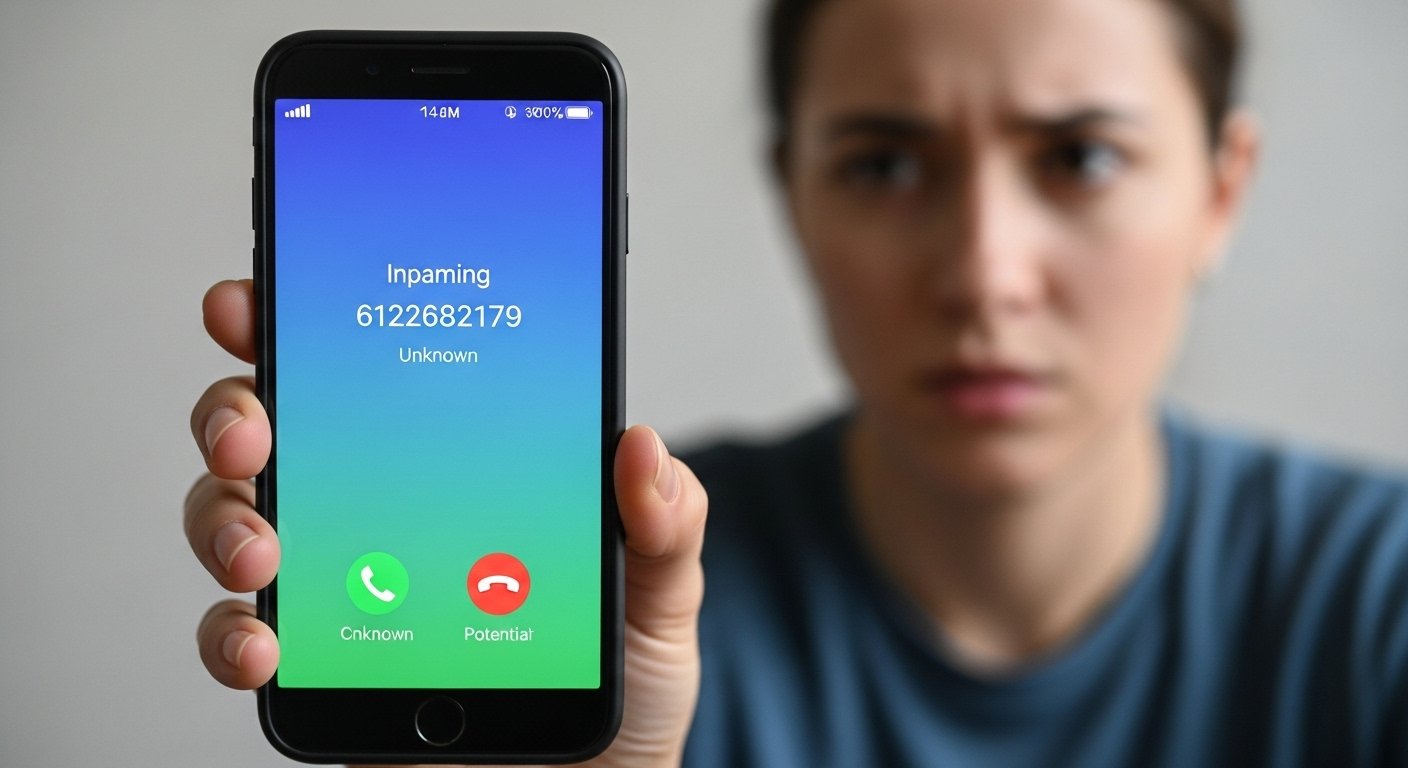Your phone rings, cutting through the silence. You glance at the screen, expecting a familiar name, but instead, you’re met with a string of digits: 6122682179. That moment of hesitation is universal. Do you answer? Is it important, or is it just another unwanted interruption? In our hyper-connected world, unknown numbers have become a daily source of anxiety and annoyance.
This specific sequence, 6122682179, is one of countless numbers that have sparked curiosity and concern. While we can’t pinpoint the exact identity of a single number—as it could be used by different entities over time—we can explore what it likely represents. More importantly, we can equip you with the knowledge and strategies to handle such calls confidently, protecting your time and your personal information. Navigating the landscape of modern communication requires a blend of caution and clarity, starting with understanding where a call like this might originate.
Where Could a Call from 6122682179 Come From?
The number 6122682179 follows a familiar pattern. The 612 area code is a legitimate one, serving Minneapolis and much of eastern Minnesota. This fact alone is what makes these calls so tricky. It’s not an obvious, foreign area code that immediately raises red flags; it looks like it could be a local business, a doctor’s office, or a neighbor. However, in the age of digital telephony, appearances can be deceiving.
There are several common sources for a call from an unknown number like this:
Telemarketers and Robocalls
This is the most frequent culprit. Automated dialing systems, known as robocalls, can blast out thousands of calls per hour from spoofed numbers. “Spoofing” is a technique where scammers deliberately falsify the caller ID to display a number they don’t actually own. They often use a local area code to increase the chance you’ll pick up, making a number like 6122682179 a prime candidate for spoofing.
Debt Collectors
Legitimate collection agencies may call from various numbers, some of which may appear unfamiliar. However, they are governed by strict regulations and should identify themselves and the purpose of their call immediately.
Potential Scams
Unfortunately, a significant portion of unknown calls are attempts at fraud. Scammers use urgency, fear, and deception to trick you into revealing sensitive data like your Social Security number, bank details, or credit card information. A call from a seemingly local number is their first step in building a false sense of trust.
The Real Danger: Understanding Phone Scams and Spoofing
When you see 6122682179 on your caller ID, it’s crucial to understand that the person calling you likely has no relation to that actual number. They are hiding behind a digital mask. This practice of “neighbor spoofing” is designed to exploit your trust in local calls.
Scammers have become increasingly sophisticated. They don’t just rely on random calls; they often have scripts and scenarios designed to catch you off guard. The key to safety is recognizing the hallmarks of a scam call, regardless of the number displayed.
Common Scam Call Themes
Being aware of these common tactics is your first line of defense.
The Fake Government Agency
The caller claims to be from the IRS, Social Security Administration, or even a local law enforcement agency. They will state that you owe back taxes, that your Social Security number has been suspended, or that there is a warrant for your arrest. They demand immediate payment, often in the form of gift cards, wire transfers, or cryptocurrency, to “settle” the fake debt.
The Tech Support Scam
You might receive an unsolicited call from someone claiming to be from “Microsoft” or “Apple Security.” They’ll tell you your computer has sent out error reports or has been infected with a virus. Their goal is to gain remote access to your computer, install malware, and then charge you a hefty fee for a nonexistent problem.
The Package Delivery Scam
With the rise of online shopping, this scam has become prevalent. The caller, pretending to be from USPS, FedEx, or UPS, says there’s a problem with a delivery. They ask for a small “re-delivery fee” or personal information to “verify” your address, aiming to steal your financial details.
How to Protect Yourself from Unwanted Calls
Knowledge is power, but action is key. If you receive a call from 6122682179 or any other unknown number, here is a practical guide on how to respond.
What to Do When the Phone Rings
Your immediate reaction can prevent a lot of potential trouble.
-
Don’t Answer Immediately: If you don’t recognize the number, let it go to voicemail. Legitimate callers will almost always leave a message.
-
Verify the Caller: If you’re expecting a call from a business or service, but aren’t sure of the number, hang up and call back using the official customer service number listed on their website or your bill.
-
Never Give Out Personal Information: A genuine organization will never call, email, or text you to ask for sensitive data like passwords, PINs, or your full Social Security number.
Proactive Measures for Long-Term Peace
Taking a few proactive steps can significantly reduce the number of nuisance calls you receive.
-
Register with the National Do Not Call Registry: This won’t stop scammers, but it should reduce calls from legitimate telemarketers. You can sign up at donotcall.gov.
-
Use Your Phone’s Built-in Features: Both iOS and Android have settings to silence calls from unknown numbers. This sends them directly to voicemail without your phone ringing.
-
Consider a Call-Blocking App: Numerous reputable apps use constantly updated databases of known scam numbers to identify and block suspicious calls before they reach you.
-
Report the Number: If you do answer and it’s clearly a scam, report the number to the Federal Trade Commission (FTC) at reportfraud.ftc.gov.
Conclusion: Taking Back Control of Your Phone
A call from 6122682179 serves as a perfect microcosm of the modern communication dilemma. It represents the blurred line between a potential important message and a digital nuisance. While the number itself is just a sequence of digits, the phenomenon it represents is very real.
The ultimate power, however, rests with you. By understanding the tactics of scammers, recognizing the signs of spoofing, and implementing practical strategies to screen and block calls, you can transform your phone from a source of anxiety back into a tool of connection. You don’t have to live in fear of the unknown caller. With vigilance and the right knowledge, you can answer your phone—or choose not to—with confidence and peace of mind.
Frequently Asked Questions (FAQs)
1. Is 6122682179 definitely a scam number?
While we cannot definitively label any single number as a “scam,” calls from 6122682179 have been widely reported by users as unwanted telemarketing or potential scam attempts. It is highly likely that the number has been used for spoofing, meaning the real caller is hiding behind a fake caller ID.
2. What should I do if I accidentally answered a call from this number?
If you answered and realized it was a scam call, the most important thing is to hang up immediately. Do not press any buttons, even if prompted to “press 1 to be removed from the list,” as this can confirm your number is active. Do not provide any personal information whatsoever.
3. Can I block the number 6122682179?
Yes, you can block the number directly from your phone’s recent call log. However, because scammers frequently use spoofing, blocking one number may not prevent them from calling you again from a different, similarly spoofed local number.
4. Is the 612 area code itself suspicious?
No, the 612 area code is a genuine geographic area code for Minneapolis and parts of eastern Minnesota. The suspicion around a number like 6122682179 comes from the behavior of the caller, not the area code itself. Scammers spoof local numbers to appear more trustworthy.
5. Who should I report scam calls to?
You can file a report with the Federal Trade Commission (FTC) at reportfraud.ftc.gov. Providing details like the phone number, the time of the call, and what the caller said helps the government track and take action against illegal telemarketing operations.

